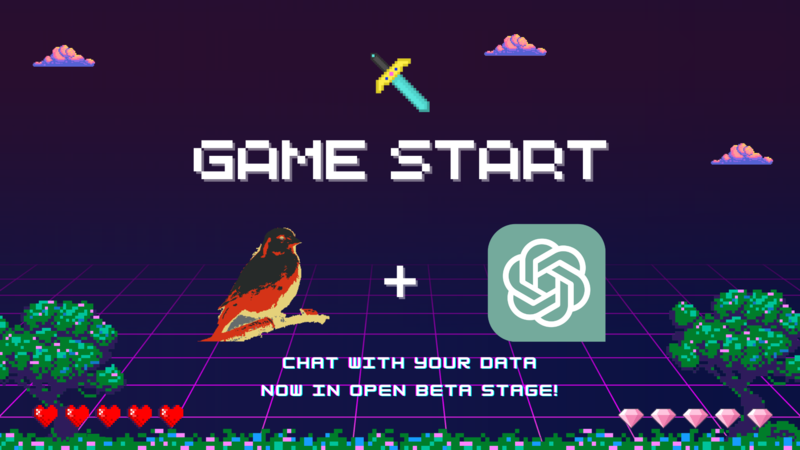Unleashing AI's Potential: How Generative Agents are Shaping Our Future
Updated on
As artificial intelligence continues to advance, researchers at Stanford University have developed generative agents, computational software agents capable of simulating human behavior in a believable manner. These agents can perform various actions, interact with one another, and even exhibit unique personalities. In this article, we'll explore the inner workings of generative agents, their potential applications, and the future of this innovative technology.
What is Going On with Generative Agents?
Generative agents employ a cutting-edge architecture that expands the capabilities of LLMs by capturing and processing the agent's experiences in natural language. This innovative approach consists of three key components:
-
Memory Stream: Documenting Experiences The memory stream serves as the foundation of the agent architecture, meticulously recording the agent's experiences for future reference.
-
Reflection: Deriving Higher-Level Inferences The reflection component takes the recorded experiences and synthesizes them into more sophisticated inferences, enabling the agent to learn and adapt over time.
-
Planning: Converting Insights into Action With a wealth of higher-level inferences at its disposal, the planning component translates these insights into actionable plans, allowing agents to respond dynamically to their environment.
Blurring the Lines Between Reality and Simulation: The Sandbox Environment
To showcase generative agents' capabilities, researchers created an interactive sandbox environment reminiscent of the popular game, The Sims. This environment houses 25 agents, each with their own personalities, preferences, skills, and goals. Users can interact with these agents using natural language, giving them commands or engaging in their activities. The environment evolves dynamically, with agents influencing one another and their surroundings, providing a rich and immersive simulation of human behavior.
The sandbox environment's agents exhibit individual and social behaviors, each with their own unique story and personality. For instance, Alice, an aspiring painter, spends her free time honing her skills and trying to impress Bob, a writer. Charlie, a fitness enthusiast, competes with Dave, another trainer at the gym, while Eve, a journalist, investigates various topics and collaborates with her photographer friend, Frank. These are just a few examples of the countless interactions that can occur between generative agents in the sandbox environment.
Architectural Foundations: How Generative Agents Generate Realistic Behavior
Generative agents use an architecture that extends a large language model (LLM) like GPT-3 or BERT to store a complete record of an agent's experiences in natural language. This architecture comprises three main components: observation, planning, and reflection. These components work together, enabling generative agents to generate realistic and consistent behaviors reflecting their personalities, preferences, skills, and goals. Furthermore, this architecture allows for natural language communication between users, agents, and other agents.
Evaluating Believability: How Generative Agents Compare to Human Actors
Researchers conducted an evaluation study to assess the believability of generative agents in comparison to human actors, scripted agents, and random agents. Participants rated agents on coherence, consistency, personality, emotion, etc. Results indicated that generative agents outperformed scripted and random agents in all aspects of believability. They also surpassed human actors in coherence and consistency, although they fell short in personality, emotion, and sociality. These shortcomings were attributed to language model limitations and the absence of non-verbal cues in the simulation.
Exploring Applications and Future Prospects of Generative Agents
Generative agents hold significant potential in various domains. In entertainment, they can create immersive virtual worlds or interactive stories. Educational applications include teaching social skills or fostering cultural awareness. Additionally, generative agents can be employed for research purposes, such as studying human behavior or testing hypotheses.
However, generative agents are not without limitations. They may produce errors or inconsistencies due to language model or simulation environment constraints. Ethical and social issues, including privacy, consent, and responsibility, must also be considered.
Conclusion: Advancing AI with Generative Agents
In conclusion, generative agents represent a promising area of research and development in artificial intelligence. By merging large language models with interactive agents, this work introduces architectural and interaction patterns that enable realistic simulations of human behavior. As this technology continues to evolve, the potential applications and future impact of generative agents in various fields are undoubtedly immense.
Citations:
- Generative Agents Paper: https://arxiv.org/abs/2304.03442 (opens in a new tab)
- Demo: https://reverie.herokuapp.com/arXiv_Demo/ (opens in a new tab)
Interested in AI? RATH (opens in a new tab) is working on a ChatGPT-based Data Analytics tool that could give you data insights with natural language. You can create beautiful charts and visualizations in no time!
Interested? Inspired? Unlock the insights of your data with one prompt: ChatGPT-powered RATH is Open for Beta Stage now! Get onboard and check it out!
